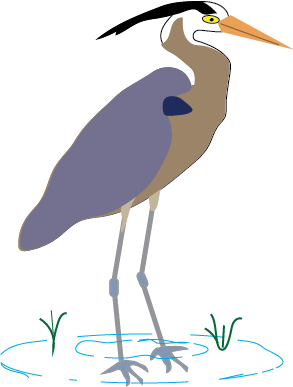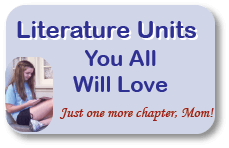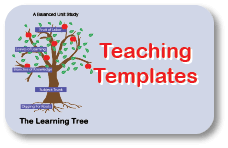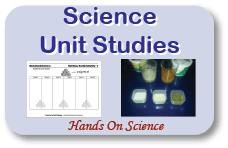Summer Vacation Essay
5 Great Strategies for an Awesome Summer Vacation Essay
If "What I did on my summer vacation" sounds like a boring essay to write (or even to read,) here are some ideas that will let your kid brag about their summer activities AND their developing writing skill.
"But I didn't get to do hardly anything this summer," some youngters may protest. "All we did was visit Grandma."
In addition to any overnight trips, kids can count day trips to local sites, camps (daytime or week long), carnivals, picnics, or swimming trips. Most kids should be able to list 4 or 5 things they did over the summmer, when given some prompts of things that can be covered.
For each activity they list, they will write one paragraph describing the who, what, when, where, why, and how. Keep in mind that "what," "why," and "how" can overlap depending on the type of activitity discussed. I usually give kids a pass on one, and they can cover any five in any order.
For students who have done writing with the 5 W's before, now is a time to strengthen that skill and focus on variety of writing. If the student writes one sentence for each of the five factors, the paragraphs may become monotonous and canned. If they stuff all five factors into a single sentence, they are left with an unsatisfying paragraph of one run-on sentence.
Some factors, such as where or how may take two or more sentences to describe. Other factors such as who and when may be combined into a single, well-written, complex sentence. Variety in sentence structure produces a pleasing and informative paragraph. One paragraph per activity, and the student will have genuine bragging rights about a full summer and an informative essay.
Write On #21 explains how to turn each of the factors - who, who, when, where, why, how - into full paragraphs. This naturally allows for strong paragraph cohension and the inclusion of topic sentences for each paragraph. It also requires kids to put more thought and detail into their paragraphs. As a reward, the student will have a thorough description of one of their favorite events over the summer. A photo with a caption would top off their essay with flare.
While this essay produces natural paragraph cohesion, it gives the writer a chance to develop less obvious topic statements. Some of their topic statements may be implied rather than directly stated.
The results is an easy, natural flowing essay that details the highlights of one of the student's most memorable events that summer.
The writer begins by remembering a one minute fragment of one of the high lights of their summer. The modern student can be encouraged to make a one-minute mental YouTube clip.
But a video clip only details one of the senses: sight. It is the easiest sense to write about. Encourage them to list the main objects in their visual field. Then push it a little further by describing a supporting detail in the periphery: for instance tanned skinned of the amusement ride operator, or the line of ants around a dropped ice cream cone.
Don't forget colors.
Encourage them to think about the sounds they heard: the most important words or noises as well as background noise. As they re-create their one-minute adventure, they list the sounds as well as the sights.
Onomotopoeia can sometimes be used to draw the reader into their auditory experience.
The sense of touch is next: what was their body touching? What physical sensations did they feel? Temperature, pain, pleasure, and speed provide valuable details of the writers' experience.
Smell and taste are often the most difficult but should not be neglected. We often are not aware of smells unless an unpleasant one assails us - but aromas are everywhere. Smell is one of the strongest triggers for emotions and can have a powerful effect into clueing the reader into the scenery they are stepping into.
Taste can be included in quite a few of these essays, but if it isn't possible to include it may be left out.
After creating a brainstormed list of the senses, the student takes their list and carefully writes a descriptive essay that allows others to share their experience in a more personal way.
Students may use any of the previous strategies: 5 W's, Chronology, or Sensory Description as delineate the events that occured. Through it all, they need to weave words and phrases that leave the reader with a specific impression of the experience.
This is a carefully crafted essay that forces the writer to use words creatively and forcefully. The thesaurus is a great friend to the writer undertaking this assignment. When finished, he or she has the pleasure of success when their reader correctly identifies the mood.
So what does the summer vacation essay accomplish? Your student has stretched his or her writing skills, described the most notable memories of the past months, and has the satisfaction of successfully sharing their experience with others.

Looking for Writing Rubrics to guide the writing and correction of your students' essays?
We have rubrics for all age groups and different types of essays.

#1: Who, What, Where, When, Why & How
The 5 W Essay: For Multiple Activities
For those kids who did multiple activities, the 5W's of Write On #20 provides a simple and effective strategy. This is a good writing technique for those who are just learning to use the 5 W's, as well as a chance to practice that writing skill."But I didn't get to do hardly anything this summer," some youngters may protest. "All we did was visit Grandma."
In addition to any overnight trips, kids can count day trips to local sites, camps (daytime or week long), carnivals, picnics, or swimming trips. Most kids should be able to list 4 or 5 things they did over the summmer, when given some prompts of things that can be covered.
For each activity they list, they will write one paragraph describing the who, what, when, where, why, and how. Keep in mind that "what," "why," and "how" can overlap depending on the type of activitity discussed. I usually give kids a pass on one, and they can cover any five in any order.
For students who have done writing with the 5 W's before, now is a time to strengthen that skill and focus on variety of writing. If the student writes one sentence for each of the five factors, the paragraphs may become monotonous and canned. If they stuff all five factors into a single sentence, they are left with an unsatisfying paragraph of one run-on sentence.
Some factors, such as where or how may take two or more sentences to describe. Other factors such as who and when may be combined into a single, well-written, complex sentence. Variety in sentence structure produces a pleasing and informative paragraph. One paragraph per activity, and the student will have genuine bragging rights about a full summer and an informative essay.
#2: 5 W's for A Single Activity
More Detailed Essay about One Event
The 5W's also allows students to describe a single event in greater detail.Write On #21 explains how to turn each of the factors - who, who, when, where, why, how - into full paragraphs. This naturally allows for strong paragraph cohension and the inclusion of topic sentences for each paragraph. It also requires kids to put more thought and detail into their paragraphs. As a reward, the student will have a thorough description of one of their favorite events over the summer. A photo with a caption would top off their essay with flare.
#3: The Chronological Essay
Experienced Writers Detailing a Multi-Fauceted Adventure
The chronological essay is a natural structure for a trip of event that was involved and consisted of distinct phases. The student begins by developing a list of the chronology, then each item on the list becomes a paragraph.While this essay produces natural paragraph cohesion, it gives the writer a chance to develop less obvious topic statements. Some of their topic statements may be implied rather than directly stated.
The results is an easy, natural flowing essay that details the highlights of one of the student's most memorable events that summer.
#4: Descriptive Sensory Essay
Older Writers: Using the 5 Senses
This essay may not be as long, but it is more challenging to write. The benefit for the student is a very interesting piece of writing and an increase in their writing capacity.The writer begins by remembering a one minute fragment of one of the high lights of their summer. The modern student can be encouraged to make a one-minute mental YouTube clip.
But a video clip only details one of the senses: sight. It is the easiest sense to write about. Encourage them to list the main objects in their visual field. Then push it a little further by describing a supporting detail in the periphery: for instance tanned skinned of the amusement ride operator, or the line of ants around a dropped ice cream cone.
Don't forget colors.
Encourage them to think about the sounds they heard: the most important words or noises as well as background noise. As they re-create their one-minute adventure, they list the sounds as well as the sights.
Onomotopoeia can sometimes be used to draw the reader into their auditory experience.
The sense of touch is next: what was their body touching? What physical sensations did they feel? Temperature, pain, pleasure, and speed provide valuable details of the writers' experience.
Smell and taste are often the most difficult but should not be neglected. We often are not aware of smells unless an unpleasant one assails us - but aromas are everywhere. Smell is one of the strongest triggers for emotions and can have a powerful effect into clueing the reader into the scenery they are stepping into.
Taste can be included in quite a few of these essays, but if it isn't possible to include it may be left out.
After creating a brainstormed list of the senses, the student takes their list and carefully writes a descriptive essay that allows others to share their experience in a more personal way.
#5: Painting A Mood
Advanced Writers Describing A Longer Event
Mood and emotion take the descriptive writing even a step further. Write On # leads students to identify the food of the event, then write a description that conveys that mood without specifically naming it.Students may use any of the previous strategies: 5 W's, Chronology, or Sensory Description as delineate the events that occured. Through it all, they need to weave words and phrases that leave the reader with a specific impression of the experience.
This is a carefully crafted essay that forces the writer to use words creatively and forcefully. The thesaurus is a great friend to the writer undertaking this assignment. When finished, he or she has the pleasure of success when their reader correctly identifies the mood.
So what does the summer vacation essay accomplish? Your student has stretched his or her writing skills, described the most notable memories of the past months, and has the satisfaction of successfully sharing their experience with others.

Looking for Writing Rubrics to guide the writing and correction of your students' essays?
We have rubrics for all age groups and different types of essays.
About Our Site
Hands-On Learning














New! Comments
Share your feedback with the rest of the home school community.